
Decoding the Enigma: Journey Across Millennia with the Tarim Mummies, Revealing Secrets of Ancient Civilizations
The Tarim mummies are a series of naturally mummified corpses discovered in the Tarim Basin in present-day Xinjiang, China, which date from 2100 BC to the first centuries BC. The first bodies were discovered in the early 20th century.

The Beauty of Xiaohe (ca. 1800–1500 BCE) is extremely well preserved. Her body was found wrapped is a wide woolen cloak. When the cover of her boat coffin was removed, she was found wearing a magnificent white hat.
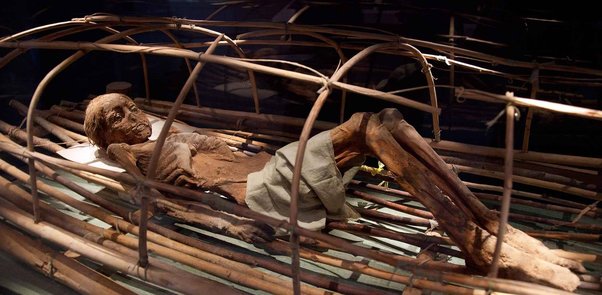
Around 330 graves have been found in the region, and although the people who originally dug them have not been identified, their DNA shows they have Eastern European, Central Asian, and Siberian heritage.

These tombs include adults and children, the majority of the coffins were made of wood, and were shaped like boats, buried upside down.

The tomb of two corpses, a couple, buried together. The woman was buried alive.
Clothes and jewelry found in the tomb were also buried alongside the mummies, in small baskets, and the bodies were wrapped in cowhide and wool. This prevented sand from getting inside the corpses.

The “witches” of Subeshi wear very tall, pointed black hats that resemble the iconic headgear of their sisters in medieval Europe. Subeshi, dated to between the 4th and 2nd centuries BCE, is located in a high gorge just to the east of the important city of Turfan.
Historian and author Adrienne Mayor has recently suggested that the single heavy glove worn by one of the female mummies may indicate that she hunted with a raptor such as a golden eagle.
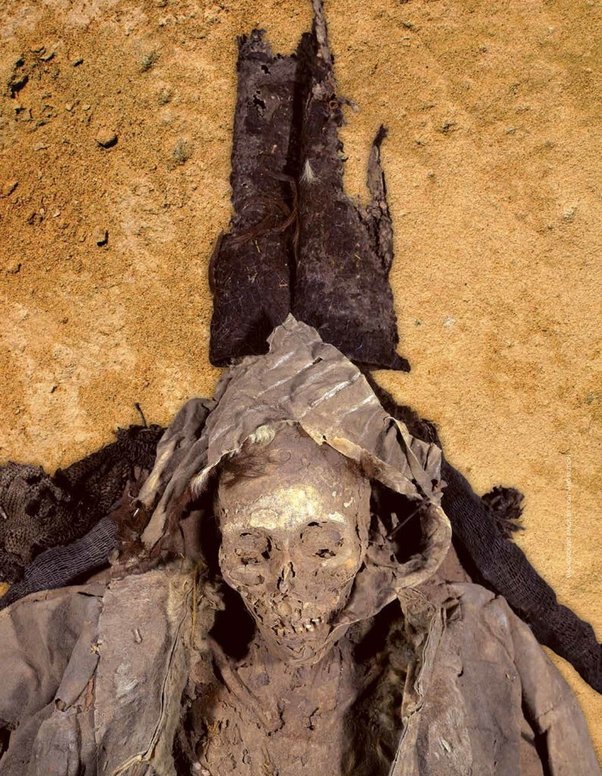
The Witches of Subeshi were buried wearing striking hats. (Photograph by Jeffery Newbury)
In addition to the wood coffins, four clay-covered rectangular coffins were also found, surrounded by stakes.
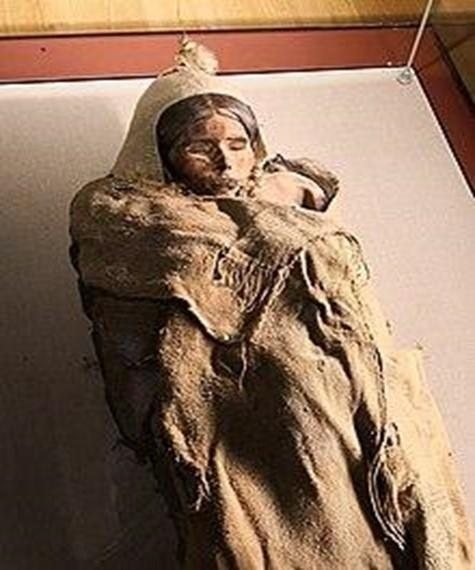
The well-preserved clothing is very similar to Western European styles.
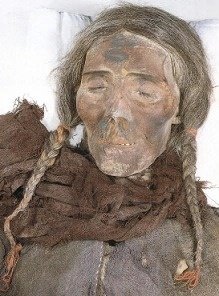
The Tarim Basin is one of the most remote (far from oceans and seas along whose littorals early humans travelled) and least populated places on Earth.
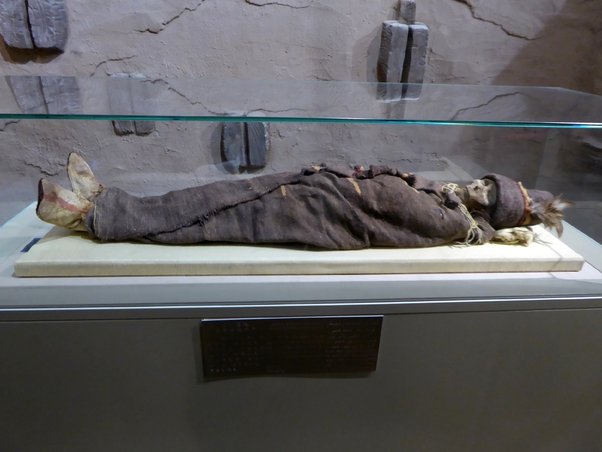
During the Paleolithic and Neolithic periods (before 2000 BCE), there is no evidence of permanent settlement in the Tarim Basin.
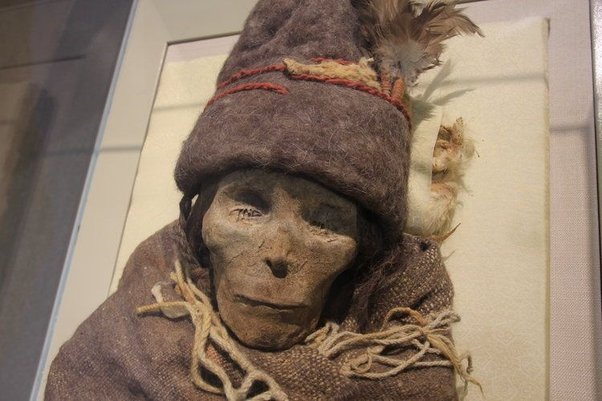
The area has sufficient sunshine, and the heat can be concentrated in the basin, so the average temperature in this area is very high.
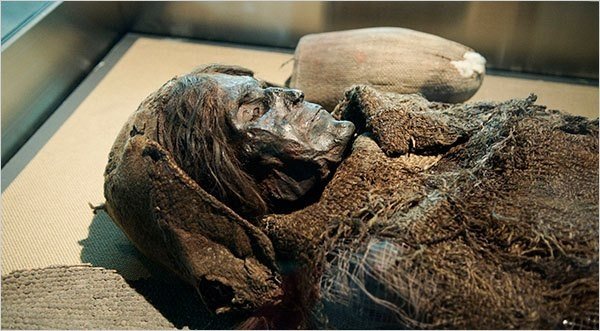
According to statistics, about a third of the days in each year, the average temperature is above 35 degrees Celsius, and on forty days the average temperature is above 40 degrees Celsius.
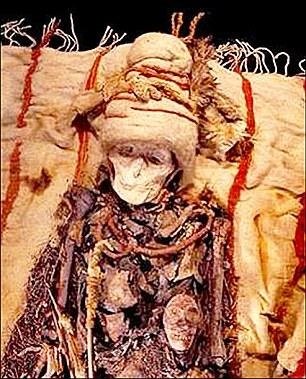
In recent years, there has even been a high-temperature record of 49.6 degrees Celsius.
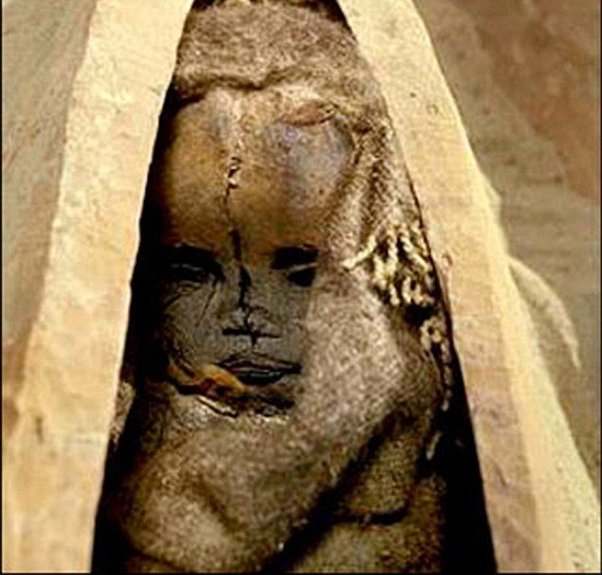
The precipitation here is very small, only a few ten millimeters per year.
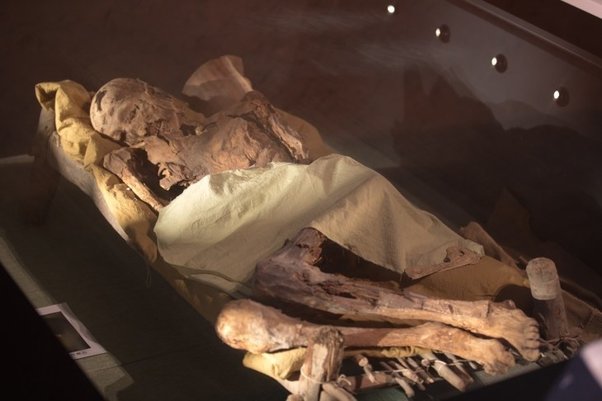
The tombs are covered with a layer of soft, ventilated sand.
In other words, the tomb here is like an oven in a laboratory, which can quickly remove water from the dead bodies buried here. Most bacteria cannot survive for too long in a high temperature and dry environment. Without the participation of bacteria, the corpse will only be weathered, but will not rot.
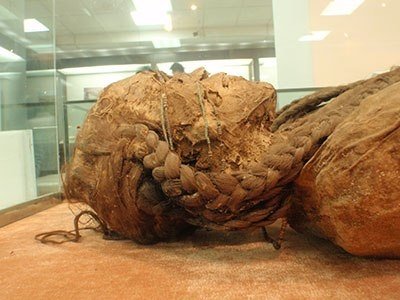
This mummy from Niya cemetery has well-preserved blonde braids. Notice also the blue glass beads draped over her face.
Chärchän Man was recovered from a tomb near the village of Zaghunluq in Qiemo County, in the central portion of the southern edge of the Tarim Basin. The tomb is situated on a plateau with extremely saline soil, which enabled excellent preservation of textiles from the extensive cemetery. This site is considerably more recent than the two discussed above and dates to around 600 BCE.
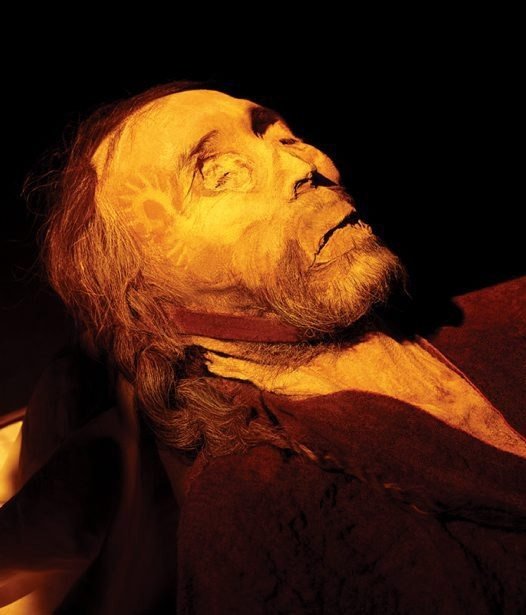
Chärchän Man
In the ancient Egyptian era, only the remains of a few people such as pharaohs and sacrifices were eligible to be made into artificial corpses. In contrast here the desert climate treated everyone the same. Therefore, the number of mummies in this area is far more than that of ancient Egyptian mummies.
According to archaeologists, there are at most thousands of well-preserved mummies in the area.
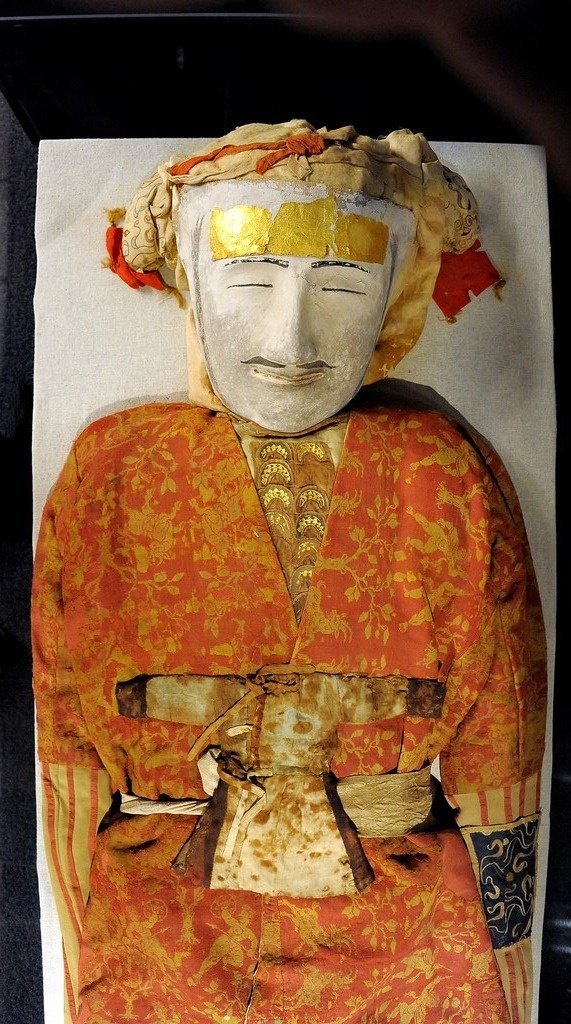
Yingpan Man
Yingpan Man must be counted among the best-dressed men of antiquity. Nearly 6’ 6” tall, Yingpan Man’s face is covered by a white mask with a strip of gold foil across the forehead. Yingpan Man’s amazing outfit, with its Greco-Roman motifs (including putti or cherubs and bulls with laurel wreaths around their midsection) and extravagant embroidery, marks him as a man of far-reaching connections.
The “Hami fragment” of cloth resembles plaids from ancient central Europe.

Textiles, such as this hat and blanket (or cloak) on a mummy are preserved in the dry, cold climate of the Tarim Basin.
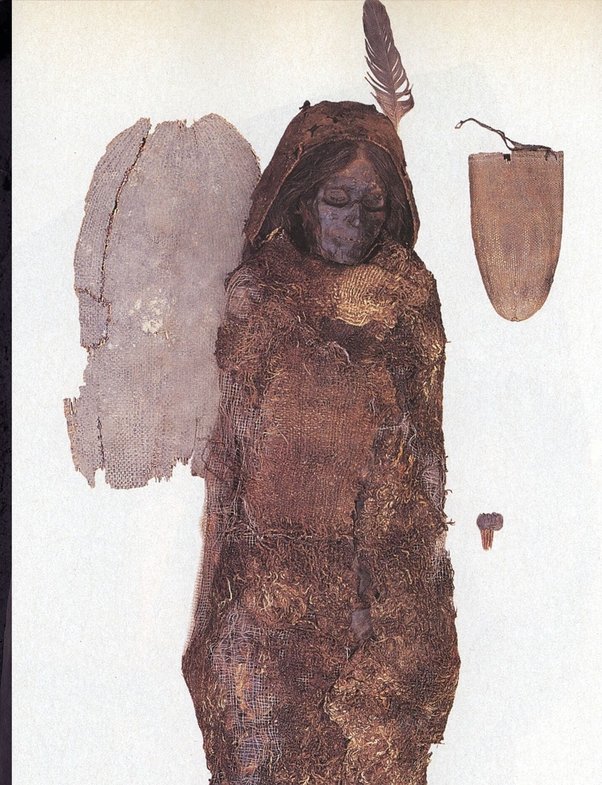
The Beauty of Loulan was buried wearing a warm cloak or shroud, a hat, and boots. Other grave goods included a wooden comb, a basket, and a winnowing tray.




